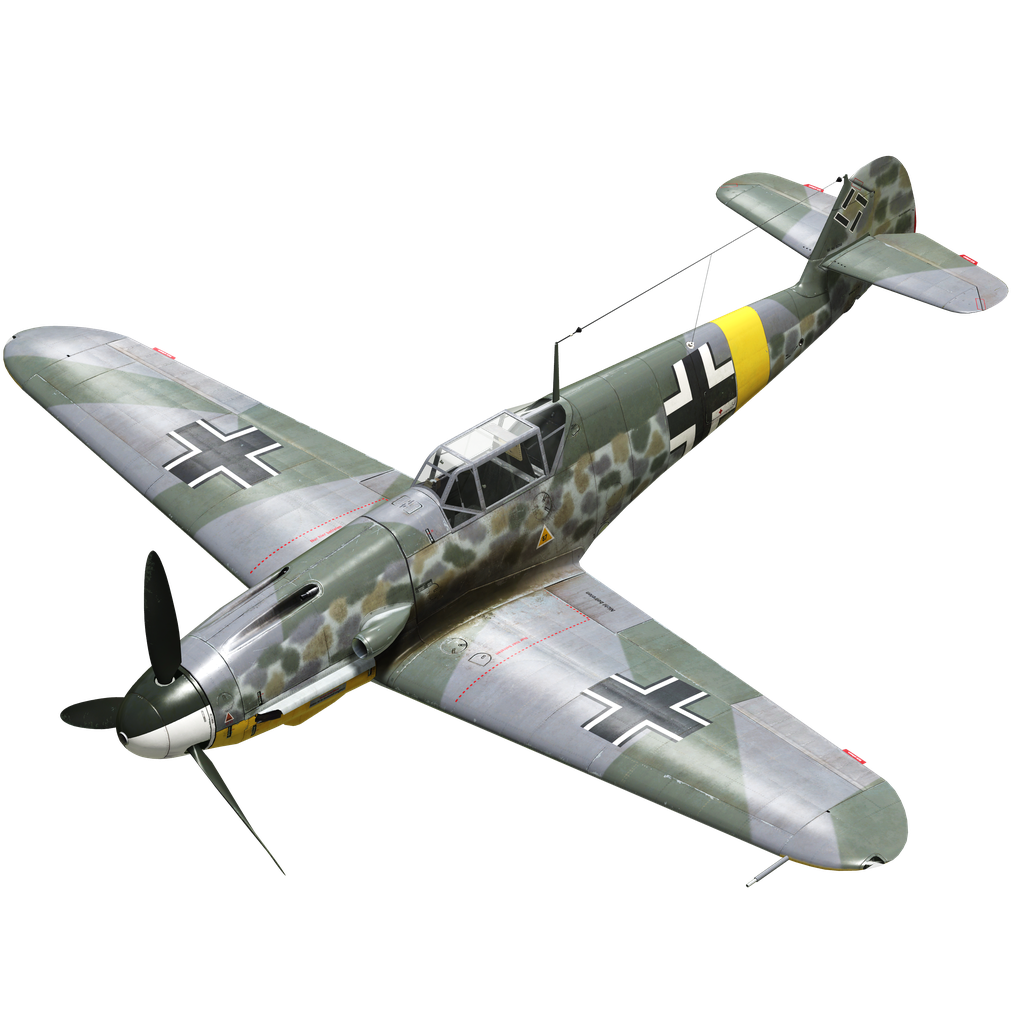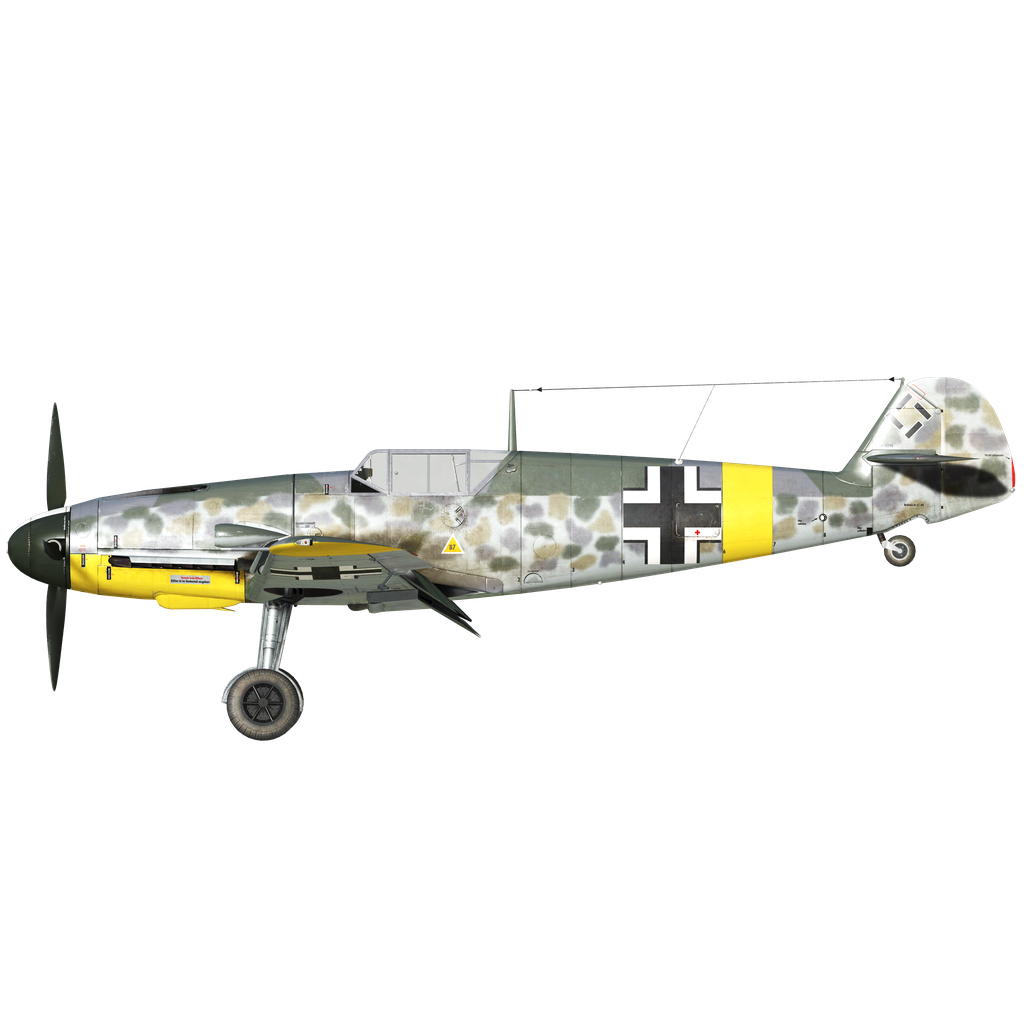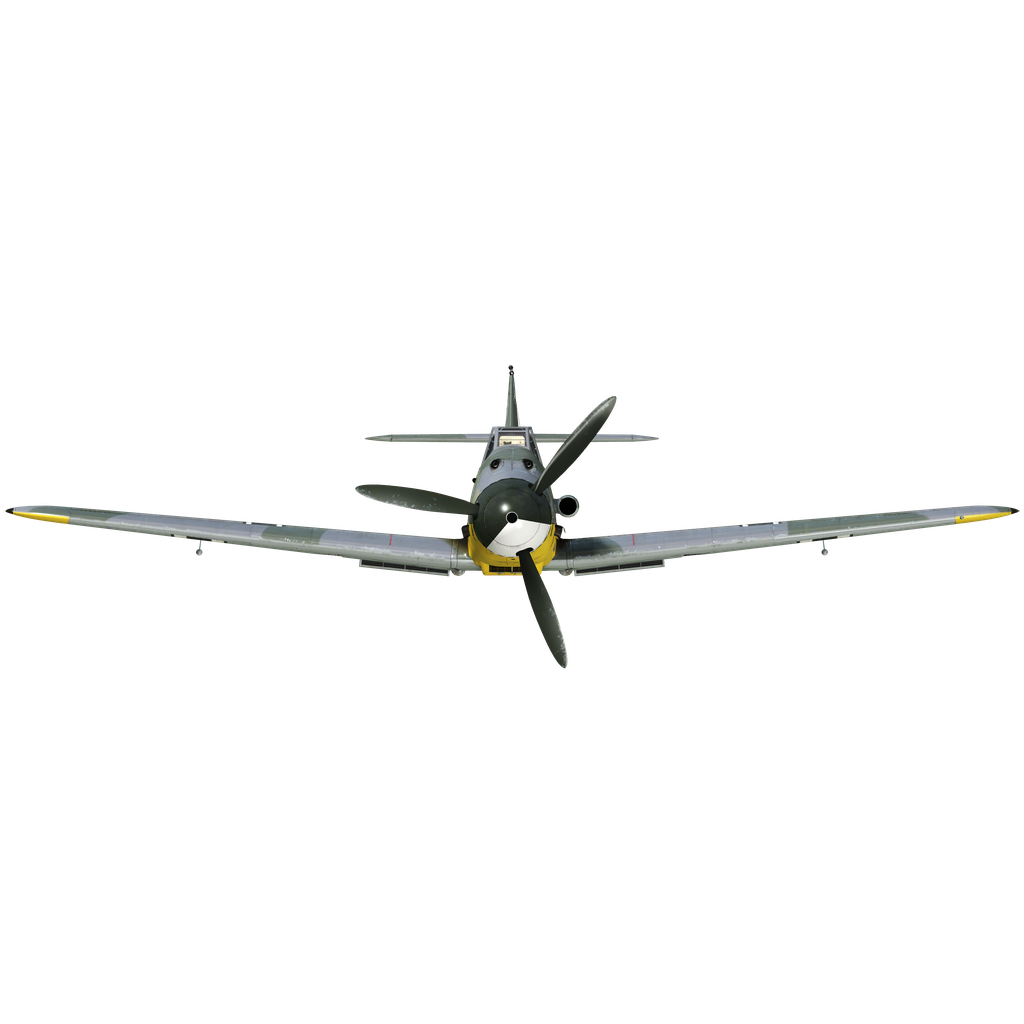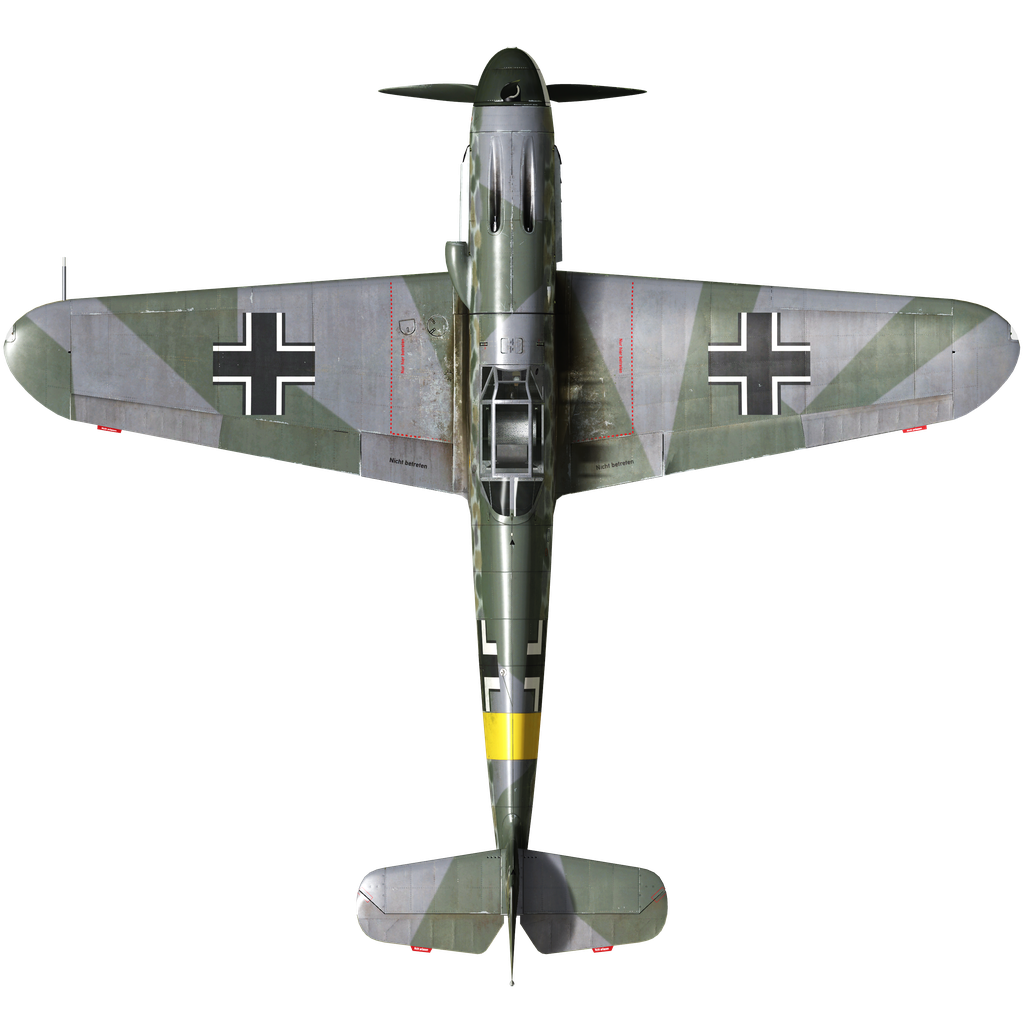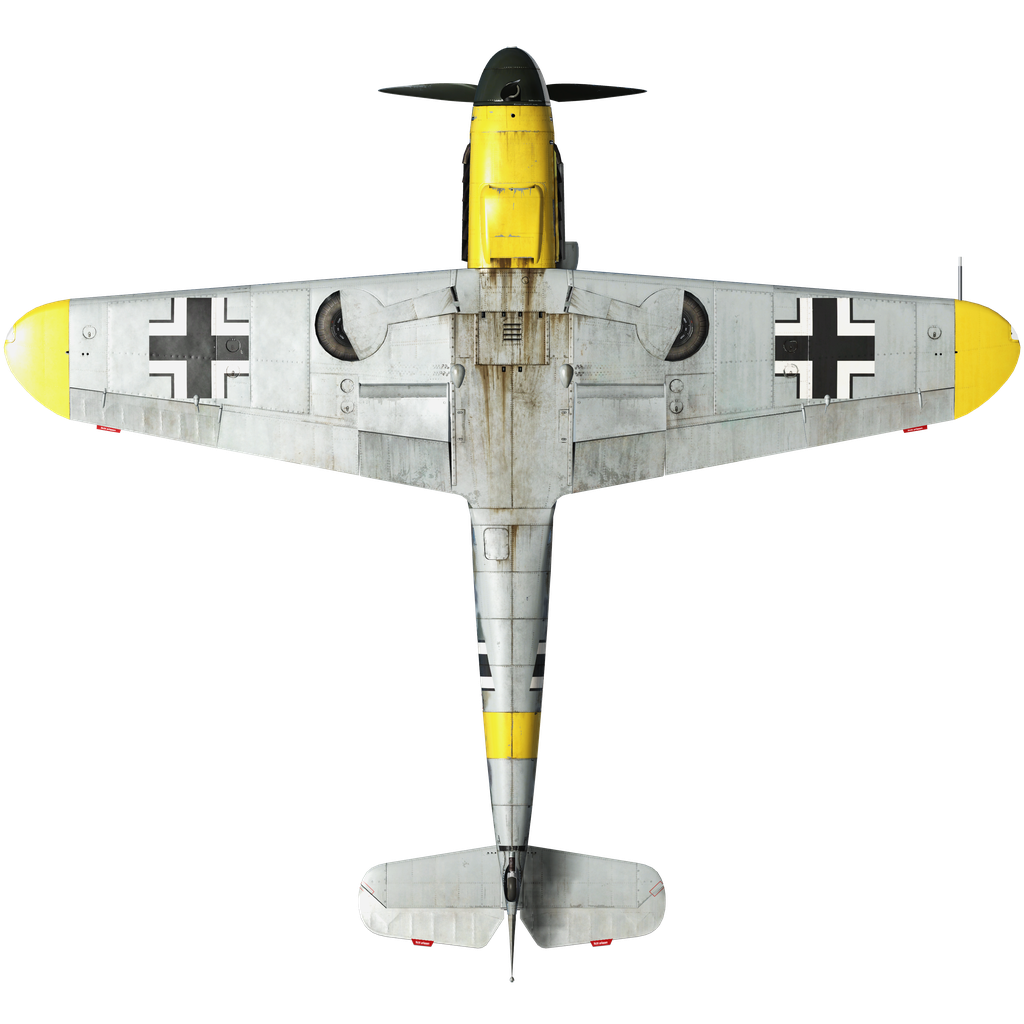The Messerschmitt Bf 109, the most mass-produced fighter of Hitler's Germany, appeared in 1934 in response to the Luftwaffe's request for the latest single-engine monoplane fighter. It was an all-metal low-wing aircraft with a water-cooled engine, retractable landing gear, and a tail wheel. The prototype's first flight took place on May 28, 1935, and in November 1936, the first aircraft were sent for military testing in Spain, where a civil war was raging. This decision was due to the failure of the He 51 biplanes, which were losing air battles to Soviet fighters. The Spanish debut ended successfully for the plane, mainly due to continuous improvements. From 1936 to 1938, 5 models were built — from the Bf 109 A "Anton" to the Bf 109 E "Emil" — and this latter model became the main machine in service with fighter squadrons.
The Second World War, which began in September 1939, made it necessary to take into account not only operational experience but also accumulated combat experience. Thus, in 1940, the designers began to radically improve the aerodynamics of the fighter to maximize the possibilities of the DB 601 engine. This is how the Bf 109 F "Friedrich" came into being.
In the summer of 1941, Daimler-Benz solved the most serious problems associated with the production of a new variant of the DB 601E engine. Unlike the DB 601N, the engine did not have an automatic boost, which limited the time of operation in this mode to 1 minute. It should be noted that according to the results of tests carried out in the Soviet TsIAM institute, the DB 601E engine developed 1450 hp at an altitude of 2000 m and 1350 hp at an altitude of 5100 m in combat emergency mode, i.e., it significantly exceeded the Soviet M-105PF2 engine.
Messerschmitt planned the next version of the Friedrich as a fighter variant with this engine and the unsuccessful MG/FF motor cannon. Meanwhile, Mauser was finally able to start serial production of a 20 mm version of the MG 151 cannon with a more powerful projectile than the 15 mm cannon installed on the Bf 109 F-2, so it was decided to arm the new aircraft with the MG 151 cannon only. The F-3 version was equipped with a 15 mm cannon, while the Bf 109 F-4 was equipped with a 20 mm cannon. It soon became clear that the latter variant was much more popular with pilots, and the Bf 109 F-4 became the main production version of the aircraft.
The maximum speed at all altitudes was increased by 10-25 km/h compared to the Bf 109 F-2 due to the more powerful engine. The climb rate was also increased. The designers improved the fuel tank protection and the head protection of the pilot.
The armament of the Bf 109 F-4 was controversial among the most experienced German fighter pilots. While Werner Mölders was fully satisfied with the light armament of one 20 mm cannon and two machine guns, Adolf Galland considered the reduction of the aircraft's armament a step backward. As a result of the disputes over armament, Messerschmitt developed a so-called "field retrofit kit" for the Bf 109 F-4, which consisted of a pair of MG 151/20 cannons in underwing pods with 120 rounds per gun. The gunpod-equipped fighter was designated the Bf 109 F-4/R1. The additional armament increased the aircraft's firepower and combat capabilities as a fighter or interceptor but compromised the aircraft's stability and controllability due to increased drag and weight. The aircraft tended to wobble and reduced its ability to engage enemy fighters in dogfights, so fighters without the additional armament were mainly used in combat units.
Sources used:
1. W. Creen "The Warplanes of the Third Reich", Galahad Books, 1986
2. "Wings of the Luftwaffe" Translation of W. Creen's book "Combat Airplanes of the Third Reich" by A. Firsov, 1993.
3. "Yak-1,7,9,3/ Bf 109 fighters" Journal of Aviation and Cosmonautics, 5-6, 1999.
4. Materials of the site airwar.ru
